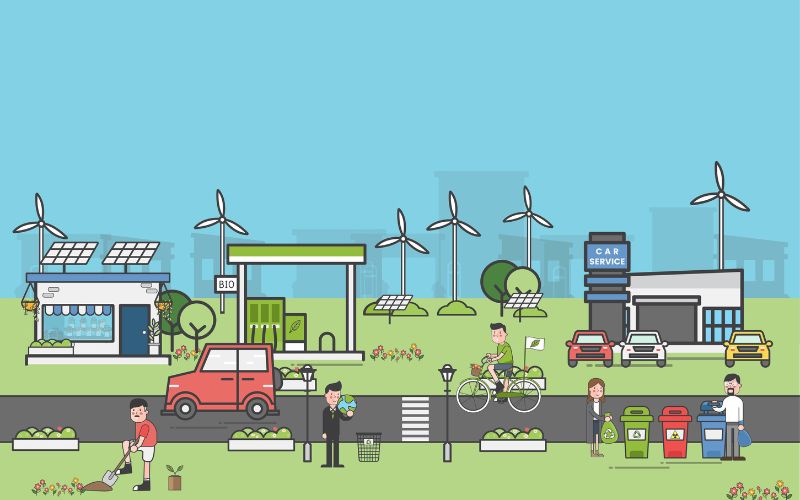Power trading models between households in smart energy communities
Amid the rapid changes in energy systems, a new study sheds light on key questions about energy trading in smart energy communities

Image: rawpixel.com | Freepik
Energy systems are undergoing rapid change. Many households are generating electricity with solar panels, and there are new sources of demand and storage, such as charging electric vehicles and home batteries. Local prosumers, energy consumers who also generate and store energy, are taking control of their energy supply. This development is prompting the creation of energy communities and micro-grids, such as the SchoonSchip community in the north of Amsterdam.
Energy communities allow consumers to generate, use, and trade energy locally. In this way, they are no longer dependent on large energy suppliers. By bringing energy generation closer to where it is needed, these communities also help to alleviate grid congestion, which is a growing challenge for grid operators.
There are two main models for energy communities. In the first, prosumers individually control their energy resources and then trade with each other. In the other model, multiple prosumers share and jointly control energy resources, such as wind turbines, solar panels, or community-owned batteries. In both models, distributed AI techniques are often used to automate and optimise peer-to-peer (P2P) exchanges.
However, these models raise many unanswered questions: How do you honestly share the costs and benefits of generating energy from shared assets? Other important questions are: How many prosumers need to be involved to make P2P trading economically viable, and what are the various reasons for people with different energy consumption needs to participate in such projects?
A recent study published in Applied Energy on February 1, 2024, aimed to shed light on some of these key questions. The researchers used large-scale real data from the UK. Co-author Valentin Robu, a researcher at Centrum Wiskunde & Informatica and Eindhoven University of Technology explained: "The focus of our study was on the marginal benefits of P2P energy exchange contracts, using a method of measurement known as gains from trade. We found that as the number of P2P energy contracts increases and more prosumers enter the market, diversity in consumption profiles quickly decreases, leading to significantly diminishing returns. This means that most of the gains from trade from an energy community can be achieved if only a fraction of the community members participate – especially those members with the most different demand profiles from other community members."
Robu also shared: "Our study also explores how an AI technique called multi-agent systems can be used to automate and optimise P2P negotiations so that both parties benefit from the energy exchange."
The study resulted from a collaboration between researchers at Centrum Wiskunde & Informatica, Delft University of Technology, and Eindhoven University of Technology, together with researchers at the University of Glasgow and Princeton University. It was part of the Marie Curie TESTBED-2 project, funded by the European Union, under the Marie Curie Staff Exchange Programme (MSCA-RISE).
The paper is available to read for free here.